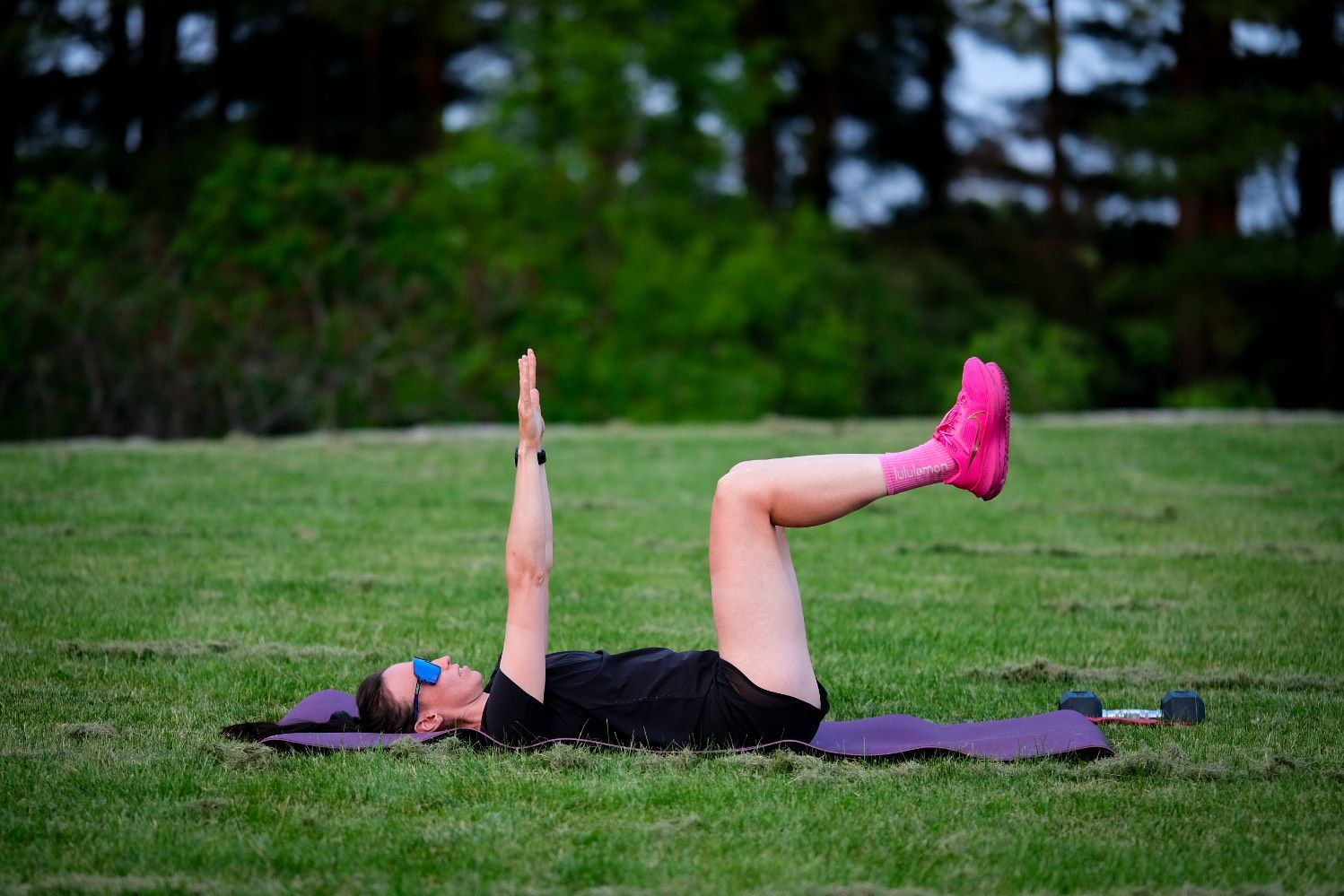Injury Prevention for Runners: 4 Must-Do Strength Exercises
Injury Prevention for Runners: 4 Must-Do Strength Exercises

There’s more to injury prevention for runners than warming up and stretching. Strength training is essential to support muscles and joints, while potentially improving both speed and endurance.
Whether you’re training for your first 5K or chasing an ultramarathon PR, running injury-free isn’t just about builidng up your endurance; it’s about how well your body is prepared to handle the load. Contrary to what you may have been told your whole life, there’s more to injury prevention than just warming up and cooling down.
Shin splints, knee pain, hip tightness, weak core, and glute soreness are all common signs your body is compensating for underdeveloped strength or mobility. The solution is to train smart. Build the engine. And run with power, not pain. The best way to do that? Strength training .
As a running and strength coach, I’ve worked with runners of all levels to develop strength programs that support sustainable progress. While the runners I work with all have individualized programs, the four movements below (or some variation of them) tend to make frequent appearnces in their training plans. These tried-and-true exercises aren’t complicated, but they yield powerful results.
And by the way: You should ALWAYS warm up before you run and have a good stretch after ! In addition to strength training, your warmup and cooldown are essential to prevent injury!
1. Bulgarian Split Squats
The Bulgarian Split Squat is a favourite among many coaches because it’s so simple, targeted and effective. Among other benefits, it helps ensure a runner’s legs are balanced in their strenth. It also sneaks in some core strengthening, which is more important than most runners realize. You may want to start without weight (it’s hard enough, trust me!) and then gradually add weights, starting with a dumbbell in each hand.
Targets: Glutes, quads, hamstrings, hip stabilizers
Addresses: Knee pain, glute weakness, imbalanced leg strength
How to do it:
- Stand in front of a bench, back foot resting on it.
- Lower into a controlled lunge, keeping your front knee stable and your torso tall.
- Drive through the front heel to rise.
- 3 sets of 8–10 reps per leg.
- To add weight, hold dumbbells or kettlebells in each hand -- or try a barbell in front or back rack position.
- Watch this video for form tips.
Why it matters: Corrects left-right imbalances and improves single-leg control, a must for protecting your knees and building a powerful stride.
Long-term win: Fewer overuse injuries, stronger drive, more efficient running.
2. Dead Bugs
Tired of ab crunches? Dead bugs are more effective and much easier on your neck too. The key to getting the most of out of this exercise is to focus on keeping your lower back pressed into the floor throughout the movement. It’s more challenging than you think, but you’ll probably still dread it less than crunches or planks!
Targets: Deep core, hip flexors, lumbar stability
Addresses: Core weakness, posture issues, hip tightness
How to do it:
- Lie on your back, knees bent at 90°, arms up.
- Lower your opposite arm and leg slowly while bracing your core.
- Alternate sides with control.
- 3 sets of 10–12 reps each side.
- Watch this video for form tips.
Why it matters: Builds deep core strength, reinforces spinal stability, and prevents pelvis collapse during long runs.
Long-term win: Less lower back stress, smoother stride, improved posture.
3. Single-Leg Glute Bridges
No one loves glute bridges, I know! But there’s a reason you dislike them: they burn. But that burning? It means they’re working, building stronger glutes -- and stronger glutes can prevent everything from IT band syndrome to painful knee injuries. The benefits are so numerous, you may even start to embrace the burn and love bridges!
Targets: Glute max, hamstrings, posterior chain
Addresses: Glute under-activation, hamstring strain, hip extension deficits
How to do it:
- Lie down with one leg bent and the other extended.
- Drive through the bent heel to lift your hips.
- Keep the extended leg in line and squeeze the glute at the top.
- 3 sets of 10 reps per leg.
- Watch this video for form tips.
Why it matters: Activates your glutes to do their job so other muscles don’t compensate. Reinforces power and proper hip extension mechanics.
Long-term win: Better propulsion, reduced injury risk, stronger finishes.
4. Lateral Band Walks (Monster Walks)
Lateral band walks may look funny, but they’re an excellent and simple way to build hip and knee stability and strengthen your gluteus medius and abductors. You can add weight to these, too! Once you’ve got the movement down, try holding a pair of dumbbells in front rack position, or get a goblet hold on a kettlebell.
Targets: Glute medius, hip abductors
Addresses: IT band pain, poor knee tracking, hip instability
How to do it:
- Place a resistance band above your knees or at your ankles.
- Drop into a shallow squat and step sideways with control.
- 10 steps each way = 1 set. Complete 2–3 sets.
- Get form tips and watch a video here.
Why it matters: Builds lateral hip strength and protects your knees from collapsing inward, a leading cause of runner’s knee and ITB pain.
Long-term win: Better stability, safer stride, more confidence on uneven terrain.
Build Smarter. Run Stronger. Train with Purpose.
If you’re ready to stop guessing and start training like a runner built for the long haul, I’m here to help. My training programs don’t just include a schedule of runs, they’re designed with targeted strength training programs tailored or each unique athlete. While most programs include leg work, upper body, and core, each is personalized so that every runner can run stronger, with confidence -- and without injury.
And if runners are injured and unable to run, we focus on strength and what we CAN do. I will often work with a runner’s physiotherapist or sport therapist’s recommendations to make sure my athletes return to running stronger and more resilient than they were before their injury.
As a running and strength coach, my goal is to create individualized plans that develop the strength, mobility, and movement mechanics you need to perform consistently, whether you are racing, running for fun, or just beginning your fitness journey.
👉 Visit CoachMartin.ca to learn more or to book a consultation.



